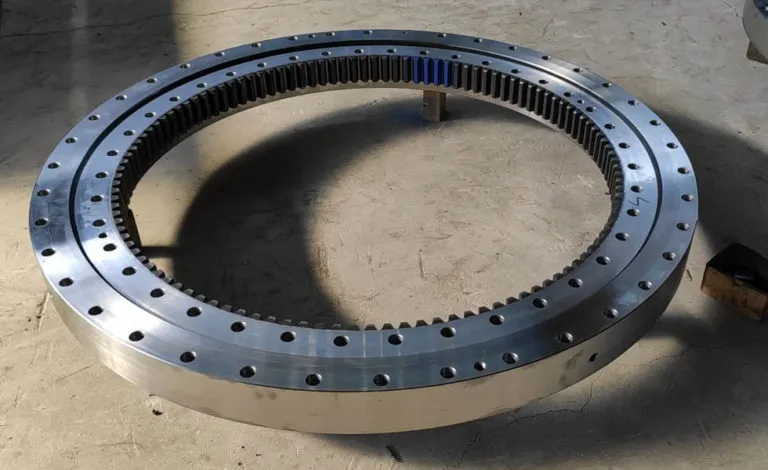-
Cangzhou Yulong Steel Co., Ltd.
-
Phone:
+86 13303177267 -
Email:
admin@ylsteelfittings.com
- English
- Arabic
- Italian
- Spanish
- Portuguese
- German
- kazakh
- Persian
- Greek
- French
- Russian
- Polish
- Thai
- Indonesian
- Vietnamese
- Zulu
- Korean
- Uzbek
- Hindi
- Serbian
- Malay
- Ukrainian
- Gujarati
- Haitian Creole
- hausa
- hawaiian
- Hebrew
- Miao
- Hungarian
- Icelandic
- igbo
- irish
- Japanese
- Javanese
- Kannada
- Khmer
- Rwandese
- Afrikaans
- Albanian
- Amharic
- Armenian
- Azerbaijani
- Basque
- Belarusian
- Bengali
- Bosnian
- Bulgarian
- Catalan
- Cebuano
- China
- China (Taiwan)
- Corsican
- Croatian
- Czech
- Danish
- Esperanto
- Estonian
- Finnish
- Frisian
- Galician
- Georgian
- Kurdish
- Kyrgyz
- Lao
- Latin
- Latvian
- Lithuanian
- Luxembourgish
- Macedonian
- Malgashi
- Malayalam
- Maltese
- Maori
- Marathi
- Mongolian
- Myanmar
- Nepali
- Norwegian
- Norwegian
- Occitan
- Pashto
- Dutch
- Punjabi
- Romanian
- Samoan
- Scottish Gaelic
- Sesotho
- Shona
- Sindhi
- Sinhala
- Slovak
- Slovenian
- Somali
- Sundanese
- Swahili
- Swedish
- Tagalog
- Tajik
- Tamil
- Tatar
- Telugu
- Turkish
- Turkmen
- Urdu
- Uighur
- Welsh
- Bantu
- Yiddish
- Yoruba

Nov . 18, 2024 16:58 Back to list
ANSI 150 Blind Flange Specifications and Applications for Piping Systems
Understanding Blind Flanges ANSI 150 Specification
In the world of piping and fluid systems, flanges play a pivotal role in ensuring safe and effective connections between different sections of pipe, various equipment, and other components. Among the various types of flanges, the blind flange is particularly significant due to its unique utility. This article will focus on blind flanges that adhere to the ANSI 150 standard, explaining their features, applications, and importance in industrial settings.
What is a Blind Flange?
A blind flange is a solid disk that is used to close the ends of piping systems or to seal off certain areas of a pipeline. Unlike other flanges that have bolt holes for fastening to another flange, blind flanges do not have a central opening—hence the name blind. This makes them particularly useful for applications where it is necessary to stop the flow of a medium or to provide access for inspection and maintenance.
ANSI 150 Specification
The American National Standards Institute (ANSI) establishes various standards for flanges, including the ANSI 150 specification. This standard outlines dimensions, materials, and pressure ratings for flanges, ensuring interoperability and safety across various industries. ANSI 150 flanges are designed to handle specific pressure ratings, which in this case is typically up to 150 psi (pounds per square inch). As a result, ANSI 150 blind flanges are suitable for low to moderate pressure applications.
The ANSI 150 blind flange comes in various materials, including carbon steel, stainless steel, and alloy steel. The choice of material often depends on the application requirements, such as resistance to corrosion, temperature tolerance, and mechanical strength. This flexibility in materials allows engineers and project managers to choose flanges that best suit the environmental conditions they will face.
Applications of Blind Flanges
Blind flanges, particularly those conforming to ANSI 150 specifications, find widespread use in numerous industries. Below are some common applications
1. Oil and Gas Industry Blind flanges are often used in pipelines to close off sections temporarily or permanently. This is crucial during maintenance operations and inspections.
2. Water and Wastewater Treatment In treatment plants, these flanges may be installed to isolate sections of the system for cleaning or maintenance without draining the entire system.
blind flange ansi 150

3. Chemical Processing The chemical industry uses blind flanges to seal off systems where chemicals are processed, ensuring safety and leak prevention.
5. HVAC Systems In heating, ventilation, and air conditioning systems, blind flanges are utilized to terminate or connect ductwork.
Advantages of Using ANSI 150 Blind Flanges
There are several benefits to employing ANSI 150 blind flanges in piping systems
- Ease of Installation Blind flanges are relatively easy to install, allowing for quicker maintenance and repairs.
- Safety By effectively sealing pipes, they prevent leaks and the potential hazards associated with fluid or gas escape.
- Cost-Effective Using blind flanges can help to enhance the efficiency of a system, leading to long-term cost savings.
- Versatility Available in various materials and sizes, ANSI 150 blind flanges can be tailored to meet specific system demands.
Conclusion
Blind flanges are an essential component in piping systems, particularly in industries that require reliable sealing and maintenance solutions. The ANSI 150 specification ensures that these flanges meet rigorous standards for safety and performance, making them suitable for a wide range of applications. Whether used in the oil and gas sector, chemical processing, or water treatment, ANSI 150 blind flanges contribute significantly to the integrity and efficiency of piping systems. Understanding their features and applications can help engineers and project managers make informed decisions in their design and maintenance strategies, ultimately leading to safer and more efficient operations.
Latest news
-
ANSI 150P SS304 SO FLANGE
NewsFeb.14,2025
-
ASTM A333GR6 STEEL PIPE
NewsJan.20,2025
-
ANSI B16.5 WELDING NECK FLANGE
NewsJan.15,2026
-
ANSI B16.5 SLIP-ON FLANGE
NewsApr.19,2024
-
SABS 1123 FLANGE
NewsJan.15,2025
-
DIN86044 PLATE FLANGE
NewsApr.19,2024
-
DIN2527 BLIND FLANGE
NewsApr.12,2024
-
JIS B2311 Butt-Welding Fittings LR/SR 45°/90° /180°Seamless/Weld
NewsApr.23,2024











